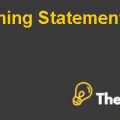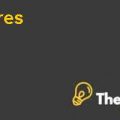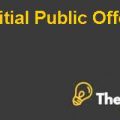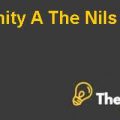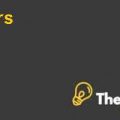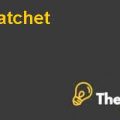
PPG: Developing a Self-Directed Work Force (A)
Introduction
PPG was in a business of fiber glass, flat glass, coatings, resins, medical electronics and chemicals. It was a global company that had 50 manufacturing sites within in the United States of America and had 100 manufacturing sites globally. Major part of its revenue was contributed by the Glass Group with $2.38 billion in 1990.
In 1957, all plants that were located in United States of America had labor unions. The presence of labor unions had a negative impact on PPG; hence, the company started to think about “Union-free” plants. PPG constructed many Union-free sites after they decided to open union-free plants. It had a positive impact on PPG and there was a significant positive change in relations with labors. Employees became more flexible and compensation was transformed from time base to salary. Task assigning became very easy for managers.
Using concepts, explain what PPG is trying to accomplish with a “self-directed work force” and how their system of HR management practices support or impede their efforts. What is PPG hoping the outcome will be? How is the “self-directed work force” concept trying to achieve this? How is this concept similar or different than concepts studied in this class?
Solution
There was an evolution in PPG when a new plant of float glass was opened and it gave a new direction to PPG. Top management was very determined to bring change in the workforce. PPG used all possible ways to bring the change; this change could increase employees’ productivity and improve the work system. These were the objectives that PPG was aiming to achieve. They wanted to change the way of making glass. State of the art technology was deployed to achieve this objective. Employees were given free hand to take the risk. They were not only restricted to use the new technology but they were also directed to use the new accounting system. Top management wanted to have a new management organization.
To implement new work force system at Chehalis; previous job designations were demolished and six semi-autonomous work teams were formed. There were separate teams for different areas and they were supposed to organize themselves. Teams were supposed to find the best way of completing the work and to assign tasks themselves. In this work force system, teams were also supposed to learn about budgeting, cost and scrap ratios; however, before the implementation of this workforce system it was manager’s responsibility. Teams were given less support and direction by the coordinator. It is a delegating style of leadership in which employees are empowered (See Fig-2).
Teams were supposed to have problem solving skills in order to solve day to day problems. Employees were rotated to different areas. It helped them to learn new skills and it also helped teams to gain flexibility.
Human resource department of PPG supported its new work system. HR department selected the best employees. HR selected those candidates who could make decision, who could solve problems and who could assist others in doing their jobs. Candidates were supposed to go through different simulation process. Candidates were evaluated in front of the observer. There were 3 simulations stages. At Chehalis, there was a lack in finding the best employees, who could fit into the desired work system. That issue was resolved when PPG consulted with Cheryl Schoenfeld. She identified some key dimensions (See Fig-1) that were necessary for effective performance. These dimensions are defined below:
- Communications Skills
- Judgment
- Problem Solving
- Organizing Skills
- Thoroughness and accuracy
- Initiative
- Performance reliability and adaptability
- Interpersonal Skills
PPG target was to select those candidates who can communicate well and was able to transfer information. PPG selected those candidates who were able to generate alternate solutions and choose the best alternative. A candidate could identify problem and solve them and he or she could make strategies. PPG selected those candidates, who followed instructions until they completed the work. A candidate must be able to bring new ideas and should not get late at work. PPG selects those candidates who can interact with others. These were the key dimensions that were necessary for effective performance. Three different styles of simulation were being used. There were many areas in the organization but one job description was developed for every employees. There were two levels of workers; one supports worker and technician’s worker.
There was a significant progress shown at PPG by 1991. Initially, engineers and coordinators had worked with support workers and technicians. After that their support was not required as much. Problem solving was technician’s responsibility while support worker went through rotation process. It enabled them to learn all jobs in few months. As a result of those efforts, PPG was trying to get desired results. This is because delegating leadership style in which less direction and ......................
This is just a sample partial case solution. Please place the order on the website to order your own originally done case solution.
PPG built a state-of-glass plant in Berea, Kentucky. The plant is intended to "self-power." Case describes the progress to date and the outstanding issues facing the government. These include questions about the shift rotation, promotion, evaluation and supervision of staff, the role of employees in the policy setting, and whether to introduce system of peer review. Explores the creation of an independent labor underlying theoretical model, and the difficulties and tensions inherent in this approach. "Hide
by David Garvin, Norman Klein Source: Harvard Business School 18 pages. Publication Date: November 23 1992. Prod. #: 693020-PDF-ENG

